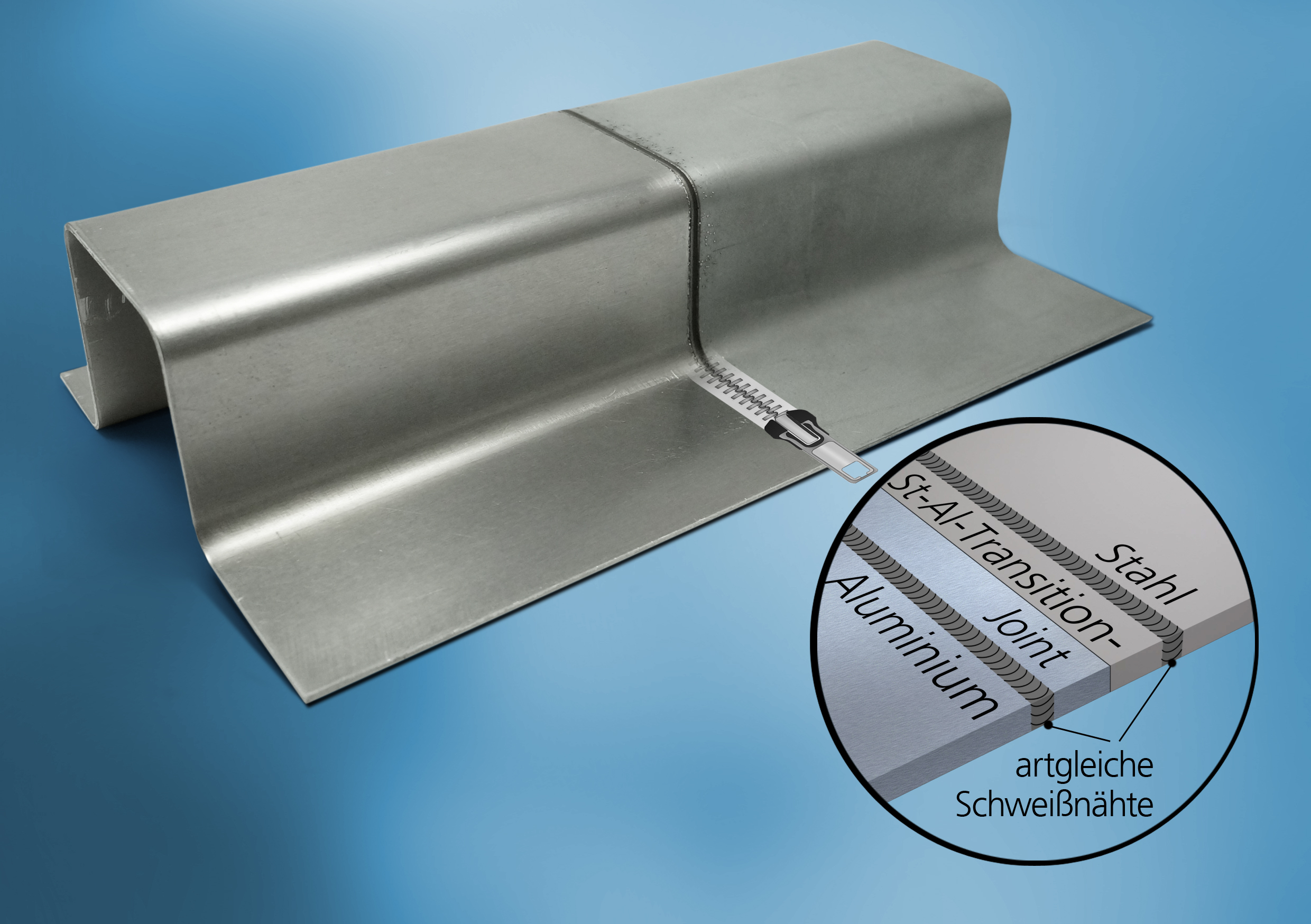Steel and aluminum: now inseparable!
The interconnectability of different materials is of the utmost importance for lightweight constructions; however, realizing these joints is uniquely difficult. Traditional thermal joining procedures, e.g. welding techniques, are often inapplicable as they create broad zones at intermetallic zones, which show a brittle behavior. The Fraunhofer IWS scientists have now succeeded in generating a steel-aluminum mixed compound with excellent mechanical properties. The key to this success, which will prepare the way for numerous applications, is the combination of two different joining techniques.
Fraunhofer IWS engineers have successfully combined two procedures, laser beam welding and laser induction roll plating (LIWP). “These two procedures allow for the joining of completely different metals in high quality”, Prof Dr. Berndt Brenner explains. These technologies have, for several years, been continuously developed and researched in the department “Surface Technologies”, headed by Prof. Brenner, at the Fraunhofer IWS.
“The combination of the two technologies opens up new application potentials for the material combination of steel and light metals “ Prof. Brenner continues, “compared to traditional thermal joining procedures, these welds show a considerably higher ductility and, as they are formable, are thus extremely suitable for lightweight constructions in the automotive industry or, for applications in crash-loaded parts of a vehicle. As they are linear connections, they do not show the unwanted tension peaks, which are typical for point-like connections. Thus the IWS technology combination is a highly economic alternative to resistance spot welding, clinching and riveting.
A two-step process is required to generate steel-aluminum mixed joints with excellent mechanical properties. In the first step, the laser induction roll plating, a bimetal strip is generated from the desired material combination. Two strip-shaped materials are inductively preheated and partially brought up to the required temperature by a specially formed laser beam. The two materials are subsequently joined via the roll plating process. Thus a very strong and ductile joining zone, almost completely free of any brittle intermetallic phases, is generated.
In itself the resulting strip is already highly suitable for different applications, e.g., copper and aluminum strips are joined in heavy current engineering and steel and bronze or brass are becoming increasingly interesting in the field of bearing production. Fraunhofer IWS had this procedure patented and, together with industrial partners has developed the required system equipment, tested and continuously optimized it for series production.
When aluminum and steel sheets are welded, the bimetal strip, which has been geometrically adjusted to the connection, serves as a transition joint between the two different materials. (Fig.1). The connection between sheet and transition joint is preferably performed via laser beam welding, a procedure which allows for speed velocities of 5m/min and more. The acutely limited energy input hardly affects the properties of the bimetal strip. Apart from overlapping and angle joints even genuine butt joints can be generated. These joints could, up to now, only be welded via tailored-blank processes.
The equipment and process development has meanwhile evolved to a stage which enables a successful implementation of metallic mixed compounds into real compounds (e.g. body construction). Several scientific studies have confirmed the excellent formability in bending, crash and deep drawing tests. Dr. Axel Jahn, manager of the IWS group “Component Design“ successfully tested the formability of classical deep drawing tools and was able to demonstrate that the introduction of multi-material design in existing production lines no longer presents any significant hurdle.
Dr. Jahn’s group implemented a crash-adjusted box profile made of steel and aluminum. Compared to spot-welded steel box profiles with the same dimensions Dr. Jahn achieved a considerable mass reduction of 30 %, showing the same crash behavior!
The Fraunhofer IWS offers customer-specific one-stop solutions in a comprehensive chain from the load-adjusted design of hybrid components to the adjustment of the joining processes and component testing.
Our experts are looking forward to welcoming you to the trade show Euroblech 2014 (hall 11, booth C05) in Hannover and to the LASER World of PHOTONICS 2015 in München.
 Fraunhofer Institute for Material and Beam Technology IWS
Fraunhofer Institute for Material and Beam Technology IWS